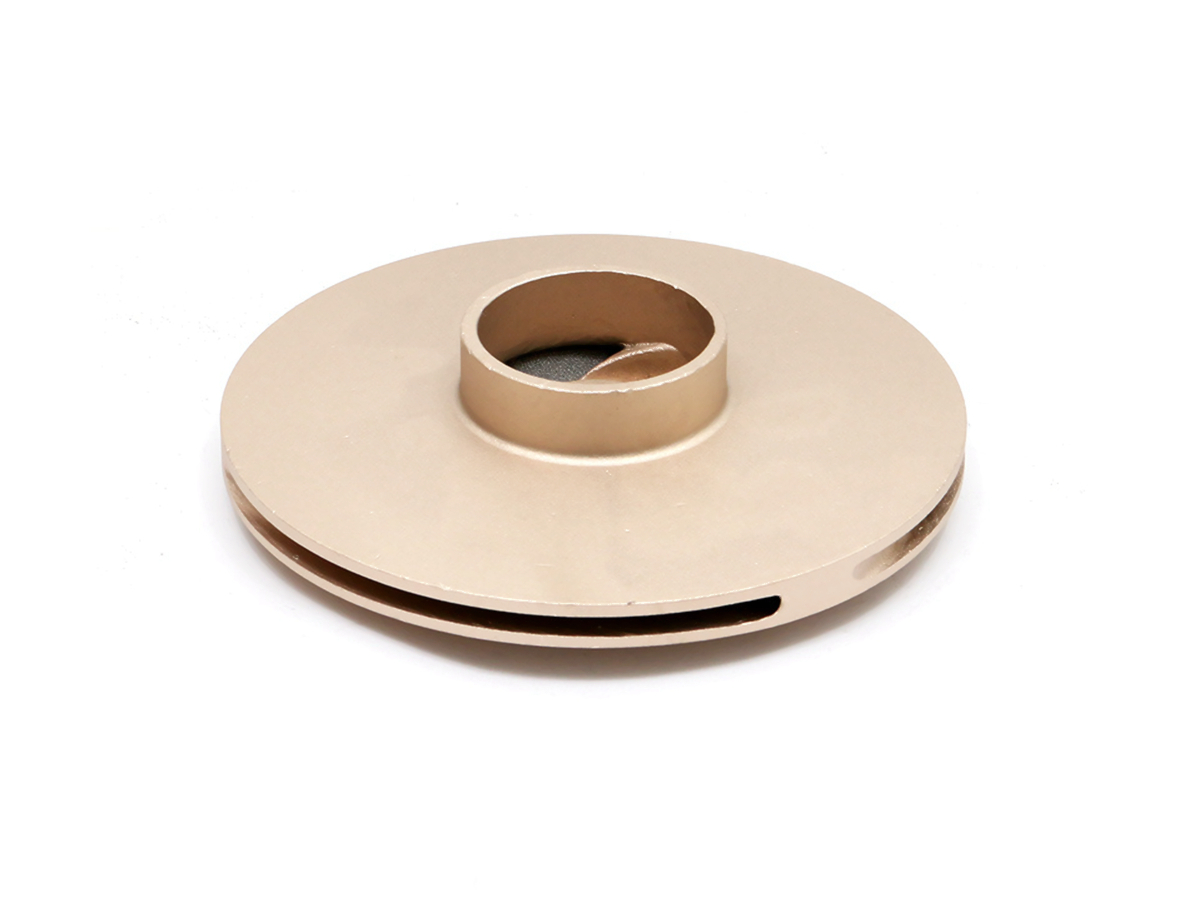Strengthening Energy Pump and Valve Parts with Precision Gravity Casting Techniques
Introduction
In energy infrastructure, pump and valve failures can lead to catastrophic downtime, with repair costs exceeding $500,000 per incident in offshore oilfields. Precision gravity casting addresses these challenges by producing components with 0.12mm dimensional accuracy and 99.7% defect-free rates. This technology is revolutionizing critical systems like geothermal feed pumps and subsea Christmas tree valves, where traditional methods struggle with corrosion and fatigue resistance.
A 2023 DOE study showed gravity-cast components extend service life by 40% in hydrogen compression systems compared to forged alternatives. This breakthrough stems from optimized material utilization and advanced process controls.
The Science of Pump & Valve Gravity Casting
Mold Engineering for Complex Geometries
Material Innovation: Beryllium-copper alloy molds are selected for their exceptional thermal conductivity (210 W/m·K) and low thermal expansion coefficient (17.5 μm/m·°C), ensuring stability during 300+ casting cycles.
Vacuum-Assisted Precision: By maintaining a vacuum pressure of <5 mbar, entrapped air pockets are reduced by 92%, critical for casting thin-walled impeller vanes (as thin as 2.5mm).
Modular Design Flexibility: Interchangeable mold inserts allow rapid configuration changes, supporting the production of multi-port valve bodies with 15+ internal flow channels.
Material-Specific Process Controls
Titanium Casting: Melted at 1,700±15°C under argon shielding (cast titanium process), achieving β-phase grain sizes of 50-100μm for optimal fatigue resistance.
Duplex Stainless Steel: Precision-poured at 1,480°C with controlled cooling rates (0.8°C/sec) to maintain 50/50 austenite-ferrite phase balance, crucial for chloride resistance >100,000 ppm.
Advanced Quality Assurance
Real-Time X-Ray Inspection: Detects inclusions ≥0.2mm with 99.99% accuracy, as validated in valve body case studies.
Hydrogen Control: Vacuum degassing reduces hydrogen content to ≤0.1ml/100g (EN 10204 3.1), preventing delayed hydride cracking in sour gas environments.
Material Selection Matrix
Material | Key Properties | Pump/Valve Applications |
|---|---|---|
PREN 49.5 Yield: 750 MPa Impact: 200J @ -46°C | Seawater injection pumps H₂S scrubber valves | |
Creep strength: 450 MPa@760°C Oxidation limit: 980°C | Geothermal steam valves Hydrogen compressors | |
Cavitation resistance: 0.01mm/yr Hardness: 280 HB | Centrifugal pump impellers | |
Marine corrosion rate: <0.005mm/yr UTS: 1,100 MPa | Offshore ball valves Desalination pump shafts |
Surface Engineering Solutions
Electropolishing: Removes 20-40μm surface layer via anodic dissolution in phosphoric acid electrolyte. Performance:
Reduces pump volute roughness from Ra 3.2μm → Ra 0.8μm, cutting hydraulic losses by 18%.
Passivates stainless steel surfaces, achieving >10,000 hours salt spray resistance (ASTM B117).
Plasma Nitriding: Ion bombardment at 500°C creates 50μm nitride layers. Performance:
Valve stems achieve 1,200HV hardness, reducing abrasive wear in slurry pumps by 65%.
Maintains corrosion resistance in pH 2-12 environments (per NACE TM0177).
Teflon Coating: Spray-coated 100-150μm layers cured at 380°C. Performance:
Lowers friction coefficient to 0.04 in control valves, reducing actuation torque by 40%.
Withstands 10,000+ thermal cycles between -196°C (LNG) to 260°C (steam).
Competitive Advantages
Parameter | Gravity Casting | Forging | Sand Casting |
|---|---|---|---|
Lead Time | 4-6 weeks | 12-18 weeks | 8-10 weeks |
Tolerance | ±0.15mm | ±0.3mm | ±0.5mm |
Max Pressure | 690 bar | 550 bar | 420 bar |
Corrosion Rate | 0.002mm/yr | 0.015mm/yr | 0.03mm/yr |
Material Yield | 97% | 65% | 75% |
Key Differentiators:
Complex Internal Features: Produces pump impellers with 0.5mm-thick helical vanes unreachable by machining.
Multi-Material Compatibility: Casts dissimilar metal joints (e.g., steel-aluminum bimetal valves) in single operation.
Critical Production Standards
Parameter | Requirement | Certification |
|---|---|---|
Dimensional | API 6A PSL 3 | NACE MR0175 |
Material | ASTM A995 Gr. 4A | ASME B16.34 |
Testing | FEA Simulation ≥10⁷ cycles | ISO 10423 |
Surface Finish | Ra ≤1.6μm (ASME B46.1) | PED 2014/68/EU |
Compliance Measures:
Leak Testing: Helium mass spec detection limit 1×10⁻⁹ mbar·L/sec (ISO 15848-1).
Cryogenic Validation: -196°C thermal shock testing per MSS SP-134.
Industry Applications
Oil & Gas:
X-mas Tree Valves: 690bar-rated gate valves with PREN 50+ bodies survive 25-year seabed service.
Metering Pumps: ±0.1% flow accuracy achieved through cast zirconium oxide liners.
Geothermal:
400°C Brine Pumps: Reinforced housings (case study) using SiC-reinforced aluminum matrix composites.
Steam Control Valves: Stellite 6 overlays applied via laser cladding for erosion resistance.
Hydrogen:
8,000psi Composite Valves: Seamless Inconel 718/Ti-6Al-4V hybrid structures prevent H₂ embrittlement.
Cryogenic Pumps: Austenitic stainless steel castings maintain ductility at -253°C.
Meta Description Explore how precision gravity casting enhances energy pump/valve performance through advanced materials, surface engineering, and API-certified manufacturing processes.
SEO Keywords precision gravity casting, energy pump components, high-pressure valves, corrosion-resistant castings, API 6A compliance
FAQs
How does gravity casting prevent cavitation in centrifugal pumps?
What stainless steel grades meet NACE standards for sour service valves?
Can Teflon coatings withstand cryogenic temperatures in LNG systems?
How do plasma nitriding treatments improve valve stem longevity?
What certifications apply to geothermal pump components?

